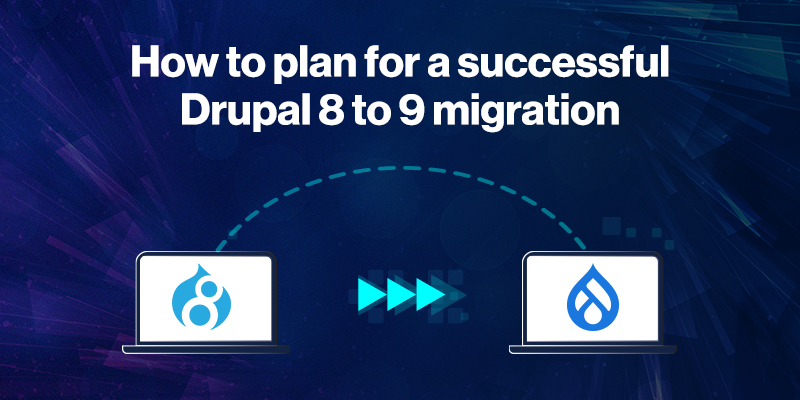How to plan for a successful Drupal 8 to 9 migration

Drupal 8 officially ended on November 17, 2021, and it is in the best interest of your organization to plan ahead for a successful Drupal 8 to Drupal 9 migration.
What is the difference between Drupal 8 and Drupal 9?
The goal of Drupal 9 is to be a drop-in replacement for Drupal 8. This means that you should be able to upgrade from Drupal 8 to Drupal 9 with little or no changes to your codebase. The main difference between the two versions is that Drupal 9 will require newer dependencies, and some deprecated code in Drupal 8 will be removed in Drupal 9.
What are the benefits of migrating to Drupal 9?
There are many benefits to migrating to Drupal 9, including
- Security fixes and support will continue to be available for Drupal 9
- You'll have access to the latest features and improvements
- Your site will be more scalable and perform better
- You'll be able to take advantage of the latest technologies
What are the risks of not migrating to Drupal 9?
If you don't migrate to Drupal 9, you'll miss out on all of the benefits listed above. In addition, your site will become increasingly vulnerable to security threats and you won't be able to take advantage of new features and improvements.
Migrate Drupal 8 to Drupal 9
When it comes to upgrading your website, there is no one-size-fits-all solution. Each migration is unique and requires a different level of planning and execution in order to be successful. If you're thinking about making the move from Drupal 8 to 9, here are a few tips to help you get started.
1. Define your goals
The first step in any website upgrade is to define your goals. What do you hope to achieve by upgrading to Drupal 9? Is it simply to keep your website running on a supported platform, or are you looking to take advantage of new features and functionality? Once you have a clear understanding of your goals, you can begin to plan your migration accordingly.
2. Assess your website
The next step is to assess your existing website. What modules and themes are you using? Do you have any custom code? Are there any third-party dependencies that need to be taken into account? Answering these questions will give you a better idea of the scope of your project and what needs to be done in order to successfully migrate to Drupal 9.
3. Plan your migration
Now that you have a clear understanding of your goals and the scope of your project, it's time to start planning your migration. There are a few things to consider when planning your migration, such as which version of Drupal 9 you want to migrate to, what migration path you will take, and which tools and resources you will need.
4. Execute your plan
Once you have a plan in place, it's time to start executing it. This is where the real work starts, and it's important to make sure that all of the pieces come together smoothly. There are a lot of moving parts in a website migration, so it's important to stay organized and on track.
5. Test and launch
After your website is migrated to Drupal 9, it's time to test everything out and launch your new site. This is an important step to ensure that your website is running smoothly and that there are no problems with the migration. Once you've launched your new Drupal 9 site, you can sit back and enjoy the benefits of being on a supported platform.
Conclusion
These are just a few tips to help you get started with your Drupal 8 to 9 migration. For more detailed information on how to plan and execute your migration, be sure to check out the Drupal 8 to 9 Migration Guide.
The above guide includes everything you need to know about migrating your website, including how to plan your migration, what to do during the migration process, and how to launch your new Drupal 9 site.
If you need any assistance, please free to get in touch with us.
